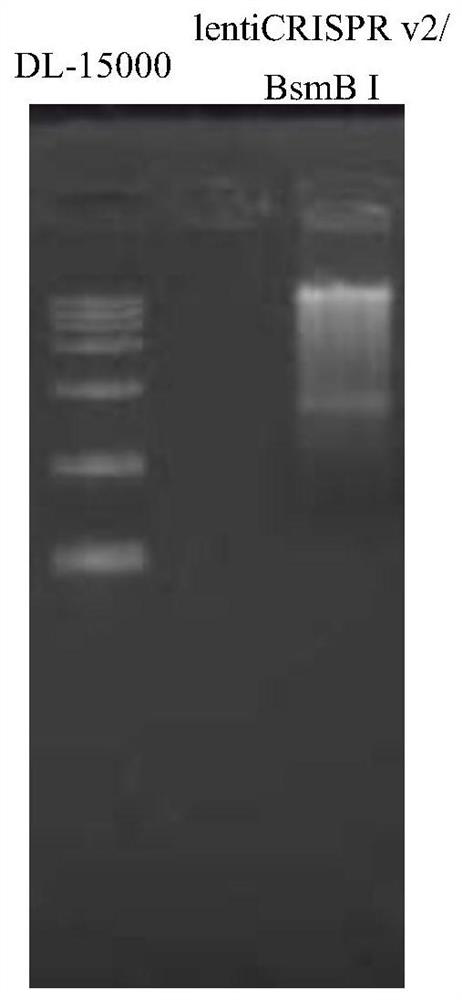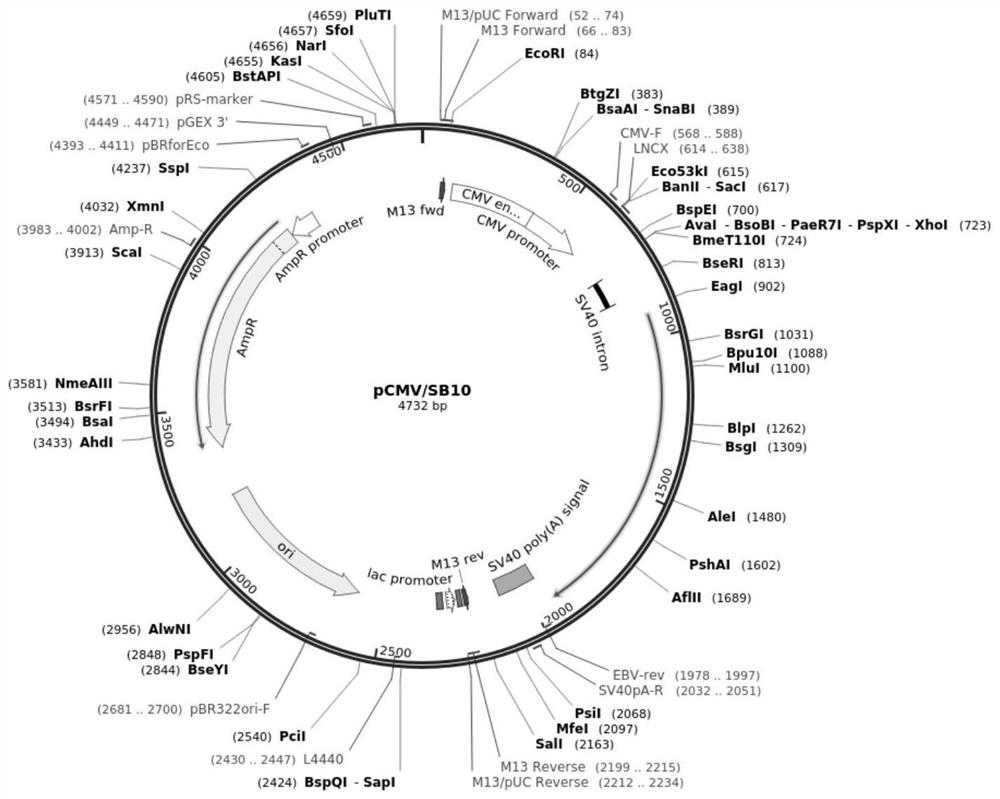Induced inflammatory cancer transformation mouse model as well as establishment method and application thereof
A mouse model and mouse technology, applied in chemical instruments and methods, biochemical equipment and methods, applications, etc., can solve the problems of living mouse models for a long time, shorten the time of tumor formation, promote liver tumor formation, The effect of improving modeling efficiency
- Summary
- Abstract
- Description
- Claims
- Application Information
AI Technical Summary
Problems solved by technology
Method used
Image
Examples
Embodiment 1
[0039] Example 1: Construction of lentiviral recombinant plasmids knocking out tumor suppressor genes pten and p53 in mice
[0040] 1.1. According to the enzyme digestion system shown in Table 1 below, use the restriction endonuclease BsmBI to the lentiCRISPR v2 vector ( figure 1 The map of the vector is shown) to carry out enzyme digestion and make it linearized as the backbone vector of the lentiviral recombinant plasmid for knocking out the tumor suppressor gene pten and p53 of mice; wherein the enzyme digestion conditions are: at 55°C After 15 minutes of enzyme digestion reaction, the enzyme was inactivated at 80°C for 20 minutes, and the digested product was subjected to 1% agarose electrophoresis. The results were as follows: figure 2 As shown, it can be seen that there is a band at 2kb, that is, the target linearized lentiCRISPR v2 vector is obtained, and the target vector band is recovered and stored at -20°C for later use.
[0041] Table 1: Restriction enzyme BsmBI ...
Embodiment 2
[0053] Example 2: Construction of Induced Inflammatory Cancer Transformation Mouse Model
[0054] This example uses the lentiCRISPR-sgPten lentiCRISPR-sgPten knockout mouse tumor suppressor gene pten knockout lentiCRISPR-sgPten knockout mouse tumor suppressor gene p53 lentiCRISPR-sgP53 knockout mouse tumor suppressor gene p53 obtained in the above-mentioned Example 1, and Sleeping Beauty The transposase expression plasmid pCMV / SB10, the recombinant plasmid pT3-EF1a-c-met overexpressing the c-met gene, and the recombinant plasmid pT3-N90-β-catenin overexpressing the Δ90-β-catein gene (the latter three were purchased from Since addgene, such as Figure 3 to Figure 5 , respectively showing the maps of the three plasmids, after the enrichment, a large number of plasmids were extracted, and stored at -20°C for future use) to establish a mouse liver cancer model, which specifically included the following operations: Using the hydrodynamic gene transfection method, the C57BL / 6 mouse ...
Embodiment 3
[0058] Example 3, Formation Verification of Induced Inflammatory Cancer Transformation Mouse Model
[0059] After the 7th week of transfection (that is, 6 weeks later), the mice were sacrificed to observe the tumor formation in the liver of the mice. The mice in the experimental group were transfected with pCMV / SB10 (5 μg), pT3-EF1a-c-met (10 μg), pT3 -Mixed plasmids of N90-β-catenin (10 μg), lentiCRISPR-sgPten (10 μg) and lentiCRISPR-sgP53 (10 μg), mice in the control group were transfected with lentiCRISPRv2 (20 μg) and pCMV / SB10 (5 μg) plasmids, HE staining Observe the pathological changes of mouse liver:
[0060] (1) Take a mouse liver tissue sample with a thickness of about 3mm, dehydrate with gradient alcohol at 70%, 80%, 95%, and 100% for 30 minutes each, two bottles of xylene for 20 minutes each, and two cylinders of paraffin wax for 12 minutes each. After embedding in paraffin, the sections were about 4 μm thick.
PUM
 Login to View More
Login to View More Abstract
Description
Claims
Application Information
 Login to View More
Login to View More - R&D
- Intellectual Property
- Life Sciences
- Materials
- Tech Scout
- Unparalleled Data Quality
- Higher Quality Content
- 60% Fewer Hallucinations
Browse by: Latest US Patents, China's latest patents, Technical Efficacy Thesaurus, Application Domain, Technology Topic, Popular Technical Reports.
© 2025 PatSnap. All rights reserved.Legal|Privacy policy|Modern Slavery Act Transparency Statement|Sitemap|About US| Contact US: help@patsnap.com



